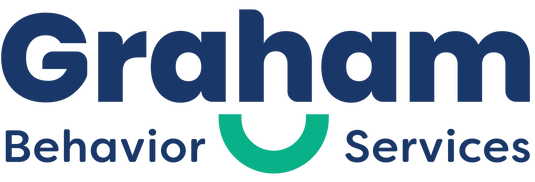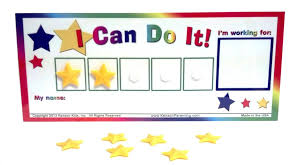Aubrey Daniels, the first editor of the Journal of Organizational Behavior Management (JOBM) defines feedback as “information about performance that allows an individual to adjust his or her performance” (2016).
In order to do our job as Behavior Analysts, we need to invest the time and energy to continually adjust and improve our performance as professionals. Feedback provides us critical insight as to where we should focus our professional development efforts. Here’s how to make the most of it.
Receiving Feedback
A recent article in the Journal of Organizational Behavior Management (JOBM) provides a list of target behaviors necessary for effectively receiving feedback (Erlich et al., 2020). These include:
- Arrives on time meeting
- Maintains eye contact during meeting
- Acknowledges corrective feedback
- Engages in active listening
- Commits to behavior change
- Indicates appreciation for feedback
- Asks appropriate follow up questions
Commit these behaviors to memory and review them prior to meeting with your supervisor. If there is a target behavior that you find to be particularly challenging, use self monitoring. Periodically check in and make sure you’re staying on track.
After your supervisor has finished talking, pause and gather your thoughts. First say, “thank you”, then, ask for clarification or more details if needed.
If you receive corrective feedback that you didn’t expect, engage in some perspective taking. How could your actions have been viewed differently by your supervisor? Before going any further, consider the goal of your questions. If it is to prove your supervisor wrong, it’s best to thoughtfully consider the feedback at a later time.
If you’d like to continue the conversation, think about what your questions convey to your supervisor? Defensiveness or a desire to do better? Would your supervisor be receptive to your comment? Is there a possibility it could be taken the wrong way?
Positive feedback presents its own set of challenges. First, don’t tune it out. Sometimes we are so used to the “feedback sandwich” or other flip-flop techniques that we focus all of our attention on what’s to come. After receiving positive feedback, say thank you. Don’t dismiss or caveat it.
Then continue the conversation by asking for details. This is the opportunity to get as much behavior specific information as possible. These data will be useful in making the most of the feedback you receive. Follow up by asking for where you can improve.
You’ll likely get a lot of feedback from a lot of people, especially early in your career, so it’s important to always consider the source. Is the feedback coming from someone you trust? Someone you look up to? While it’s unlikely that anyone would deliberately lead you astray, everyone has their own conscious and unconscious biases and motivations.
When receiving feedback, the only factor within your control is your reaction. Conducting yourself in a manner that is respectful, ethical, and professional will save you from regrets.
Always look at receiving feedback as an opportunity for learning and growth: whether it’s how to be a better clinician, how not to give feedback to someone else down the road, or just a chance to get better at receiving feedback.
 Giving Feedback
Giving Feedback
The first step in providing effective feedback is planning ahead. We all know the importance of building a rapport with our clients before getting to the tough stuff. The same is true for your relationship with those you supervise.
When giving feedback feels uncomfortable, supervisors engage in avoidance behaviors, like texting, “Great job today!” to the therapist we supervise later in the evening. Looking at Organizational Behavior Management (OBM) research, it’s clear that this method is the least effective. Effective feedback is given frequently and in the moment.
Effective feedback is also descriptive (Park et al., 2019). Behavior specific praise is another strategy that is applicable to the clients we work with and those we interact with professionally.
If you’re not sure where to start, the Performance Diagnostic Checklist for Human Services (PDC-HS) provides an objective framework for evaluating performance and developing solutions. You can also use it as a guide for developing your own system.
Don’t forget about the data. Make a procedural fidelity checklist, collect behavior data on the clinician, or take structured anecdotal notes. These data will provide you objective information to refer to if needed. It also serves as a reminder that, “this is business, not personal.”
When providing feedback, focus on effort, persistence, and drive, instead of achievements. Projects and therapy sessions have finite beginning and end points. The goal is to reinforce behaviors that will serve therapists in various capacities throughout their careers.
It’s also important to consider who you are giving feedback to and where she is in her career. Some research indicates that beginners are more motivated by positive, encouraging feedback while seasoned professionals thrive on constructive feedback that will take them to the next level (Sometimes Negative Feedback is Best, 2021). When giving feedback, think about skills and deficits. Is confidence the deficit? Then praise and encouragement is the feedback you should be providing.
Soliciting Feedback
What if you want feedback but no one is providing it? Get in the habit of asking for it, but be considerate.
Whether you’re soliciting informal or formal feedback, be mindful that you are requesting someone’s time and energy. Prioritize your requests for feedback by choosing one or two projects, programs, or skill areas that you’d like to focus on.
Soliciting informal feedback can take the form of running an idea by a colleague, speaking up on a collaborative call, or asking your team to review a training you made before it goes live.
If you’re looking for more formal feedback, first think of someone who you trust, look up to, and with whom you share professional values. When reaching out, make the response effort as low as possible. Here are some tips and an example.
- Allow for a flexible time frame and make it clear that your request is not urgent.
- Be specific. For example: Instead of, “Can you give me some feedback?” say, “Can you give me some feedback on my parent training program.”
- Provide multiple days/times when you are available to meet or talk.
Dear ____, I hope you are doing well. I really admire your ability to manage difficult situations with staff and I’m working on developing my own skills in that area. If you have time, I would love the opportunity to set up a 20 minute call to hear some of your feedback. I’m available on:
Tuesday, April 20: 8:00AM-1:00PM
Wednesday, April 21: 1:00PM-5:00PM
Thursday, April 22: 7:00AM-9:00AM, 4:00PM-8:00PM
Friday, April 23: All day
Do any of these days/times fit with your schedule? If not, just let me know when you’re free and I’ll make it work. Thank you!
Being able to use feedback to your advantage is a huge asset. Continue to practice giving it, receiving it, and soliciting it. Know that sometimes it will be uncomfortable, regardless of what side of the table you are on, and that’s okay. Give yourself a little grace and remember why you started.
Bibliography
Daniels, A. (2016). Bringing Out the Best in People: How to Apply the Astonishing Power of Positive Reinforcement, Third Edition (3rd ed.). McGraw-Hill Education.
Ehrlich, R. J., Nosik, M. R., Carr, J. E., & Wine, B. (2020). Teaching Employees How to Receive Feedback: A Preliminary Investigation. Journal of Organizational Behavior Management, 1–11. doi:10.1080/01608061.2020.1746470
Harvard Business Review. 2021. Sometimes Negative Feedback is Best. [online] Available at: <https://hbr.org/2013/01/sometimes-negative-feedback-is> [Accessed 26 March 2021].
Jin-A Park, Douglas A. Johnson, Kwangsu Moon & Jaehee Lee (2019) The Interaction Effects of Frequency and Specificity of Feedback on Work Performance, Journal of Organizational Behavior Management, 39:3-4, 164-178, DOI: 10.1080/01608061.2019.1632242














